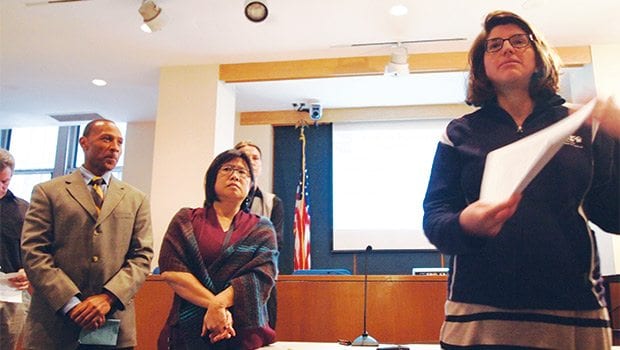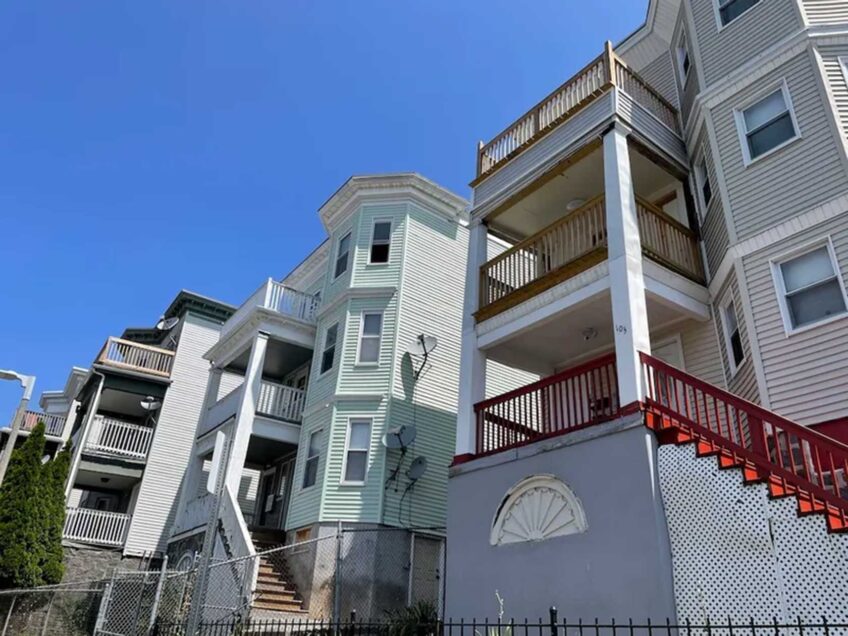
In the face of Boston’s hot development market, city officials and community leaders are seeking ways to safeguard neighborhoods against gentrification. One idea with roots in the 1960s and 70s has returned to the forefront: community land trusts.
Recently the city’s Housing Innovation Lab and the Greater Boston Community Land Trust Network convened a workshop that brought together city housing and development official and interested community members to discuss how to bolster this approach.
On the web
Read the Tufts and Greater Boston Community Land Trust Network report: dsni.org/for-researchers or pennloh.files.wordpress.com/2016/05/building-a-livable-boston-april2016ver.pdf
Groups form land trust network: http://baystatebanner.com/news/2016/apr/27/groups-form-land-trust-network/
The advantage of land trusts, presenters at the gathering said, is that land remains in the hands of community members indefinitely and can be designate to match local needs such as affordable housing and urban farming. The idea is not a new one: the first American land trust emerged in Georgia in 1970, inspired in part by Israel’s experience with cooperatives and land development. Currently, there are approximately 250 nonprofit CLTs nationwide.
Efforts to enact this approach in today’s Boston face difficulties. While Boston has one established land trust, other fledgling or would-be trusts struggle to acquire land, funding and organizational capacity.
“We have a land trust but don’t own any land. … This is huge challenge,” Lydia Lowe, part-time coordinator of the Chinatown Community Land Trust said at the meeting.
Part of the workshop was given over to discussion of how the city can step in to help better support such ventures.
Community land trust architecture
Typically, community land trusts purchase land, while allowing residents to build limited equity by owning the buildings on top of it. The trusts use long-term ground leases — often lasting 99-years — with provisions restricting how the land can be used. Often these restrictions require that anyone who purchases the structures be low-income — thus preventing the housing from being flipped into condos or other forms of profiteering. Some land trusts also may designate the parcels for commercial use or urban farming.
The purchase prices on homes built on community land trusts tend to be low, with deeds limit the price at which the homes can be resold. This arrangement guarantees long-term affordability, but limits the equity owners can accrue.
Presenter John Davis of Burlington Associates, a national consulting cooperative that supports CLTs, said another virtue of such entities is that they have an ongoing incentive to keep the land and structures in good condition, unlike developers who walk away once the project is finished. CLTs remain involved as property stewards, ensuring that the homeowner does not damage it, and often craft leases to match local priorities. Generally, land trust board membership is equally balanced among multiple stakeholders including community members; public interest groups such as churches, nonprofits and government representatives; and leaseholders, which gives everyone equal standing and influence. Additionally, CLTs provide stable affordability to low-income residents during hot retail markets that otherwise drive prices out of reach, while helping to maintain building quality and upkeep during cold retail markets, Davis said.
Land trusts without land
Creating and expanding a land trust can be difficult, with acquisition of land and financing posing the steepest barriers, along with administrative set-up. The Chinatown Community Land Trust, formed in 2015 to combat intense gentrification pressures in the neighborhood, thus far has been unable to obtain any property, despite conversations with owners.
City officials said at the meeting that state law prohibits them from just granting public parcels to land trusts, requiring instead that they go through a request for proposals process. The RPFs must be written so that there are multiple viable bidders — meaning that they cannot be explicitly geared to CLTs, if there is only one CLT in that community.
However, community leaders said there is a middle ground: They proposed that the city write RFPs not necessarily targeted at CLTs, but that seek candidates offering the longest-term affordability and highest levels of resident and community ownership and stewardship.
Another complication: The city often must select bidders with a proven history of financial acumen and capacity, officials said. This can put startup groups out of the running. Dudley Neighbors, Inc. — the oldest and most established land trust in Boston — has found one way around this dilemma. DNI collaborates on bids with established community development corporations that have that kind of history.
During the meeting, some community leaders also discussed whether tax incentives could incentivize private developers to sell land to CLTs. Some similarly suggested encouraging developers to fulfill inclusionary development obligations through constructing or funding affordable units on land owned by or slated to be given to CLTs.
The Coalition for Occupied Homes in Foreclosure plans to pilot the idea of using inclusionary development obligations to support its mission. The organization is partnering with the Boston Planning and Development Agency and developers to use developers’ IDP funds to purchase and rehabilitate properties for affordable use, executive director Maureen Flynn said at the meeting.
Funding and support
Tufts University Field Project team members, in partnership with the Greater Boston Community Land Trust Network, published a report on CLTs in April 2016, in which they recommended that the city provide low- or no-interest loans to land trust to acquire, develop, preserve and rehabilitate housing as well as financial assistance with staffing and legal services.
Currently Dudley Streets Neighborhood Initiative, the community development corporation that created DNI, is taking up the mantle and offering consultation to community organizations interested in forming land trusts. This includes information on CLTs models, bylaws and networking with key city hall officials.
The Greater Boston Community Land Trust Network is another asset. It was created in March 2015 by DSNI and seven other groups for sharing best practices and coordinating policy advocacy. The network launched publicly in April 2016
Growing CLT scene
DNI was formed in Roxbury in 1988 by Dudley Street Neighborhood Initiative, when land was cheap. It has since grown to own more than 30 acres of land, which hold 226 units of affordable housing, as well as an urban farm, greenhouse, charter schools, parks and a town common.
The Chinatown Community Land Trust formed in 2014. Joining the scene as well are a handful of prospective and forming CLTs.
The Coalition for Occupied Homes in Foreclosure purchases homes where tenants are at risk of displacement and converts them to affordable housing to keep residents in place. COHIF’s Flynn said the organization now hopes to establish a nonprofit land trust and place properties it owns into the trust. The parent organization, COHIF Inc., would continue to own the buildings while the new land trust would own the land.
The Urban Farming Institute of Boston has worked to develop land for urban farms and locally-based food production. Until recently the organization’s collaborative model relied on DNI acquiring land by way of Trust For Public Land, then leasing it to UFI for farming. Now UFI is expanding into Mattapan, Dorchester and Roxbury, which fall outside of DNI’s purview, so will need to create its own land trust focused on urban commercial farms, a representative said.
Mattapan United also is considering creating a CLT as one strategy for holding off or containing gentrification. A representative attended the meeting to hear lessons from other CLTs and learn best practices. A member of the Fairmount Greenway said they are exploring the idea of creating a CLT to acquire land for open space along the Fairmount corridor.
Marcy Murninghan contributed to this article.





